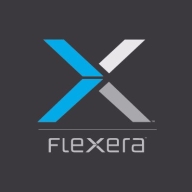


Flexera Cloud Management Platform and Spacelift are competing cloud management solutions offering distinct advantages in cloud management. Spacelift appears to have the upper hand in agility and scalability, attracting organizations building dynamic infrastructure.
Features: Flexera Cloud Management Platform emphasizes features like comprehensive cloud cost management, optimization, and strong governance capabilities. Optima, a notable feature, aids in extensive cost management, and governance helps mitigate compliance risks. Spacelift facilitates infrastructure automation and CI/CD, with standout features like Terraform support and policy-as-code, fostering streamlined DevOps processes.
Room for Improvement: Flexera Cloud Management Platform could improve its complexity in deployment to better cater to medium-sized enterprises. Enhancing user-friendliness and reducing the learning curve could attract diverse users. Spacelift might focus on expanding its feature set beyond Terraform to cover more automation tools. It could enhance its enterprise-grade governance features and provide more customizable policy options for varied compliance needs.
Ease of Deployment and Customer Service: Flexera Cloud Management Platform delivers a powerful but complex deployment process, offering extensive customer support options tailored to large enterprises. Spacelift ensures a straightforward deployment model paired with responsive customer service, suitable for smaller teams or those new to infrastructure automation.
Pricing and ROI: Flexera Cloud Management Platform involves higher setup costs, which can lead to significant ROI for large-scale operations needing cost and compliance management. Spacelift offers a cost-effective setup with potential for quicker ROI, especially for organizations concentrating on CI/CD pipelines and developer-friendly environments.


IBM Turbonomic offers automation, planning, and right-sizing recommendations to streamline resource management, improve efficiencies, and optimize costs across virtualized environments and cloud platforms.
IBM Turbonomic is valued for its capability to optimize resource allocation and monitor virtual environments efficiently. It facilitates automated decision-making in VM sizing, load balancing, and cost optimization for both on-premises and cloud deployments. Users can leverage insights for workload placement, ensure peak performance assurance, and effectively right-size across VMware and Azure. The ongoing transition to HTML5 aims to improve visual and navigational ease, while expanded reporting features are anticipated. Opportunities for improved training, documentation, and integrations enhance platform usability and functionality.
What Are the Key Features?In finance, IBM Turbonomic aids in maintaining platform efficiency during market fluctuations. Healthcare organizations leverage its capability for resource optimization during high-demand periods to enhance patient care support. Retailers use it for planning in peak seasons, ensuring resources align with fluctuating demand to maintain performance continuity.
Flexera Cloud Management Platform (CMP) optimizes cloud costs and resources while efficiently managing multi-cloud environments. Its features for monitoring and governance aid in compliance. Valued for integration capabilities and automation tools, Flexera CMP streamlines cloud operations.
Flexera Cloud Management Platform (CMP) excels in multi-cloud management, cost optimization, and automation. Users appreciate its detailed analytics and reporting features that effectively track usage and costs. The platform's flexibility in integrating with different cloud environments allows seamless operations across various services, while its governance and policy enforcement are significant strengths. However, some users note the need for better integration with additional cloud providers, a high installation complexity, and that the support documentation lacks depth. Reporting features could be more comprehensive, and scalability issues exist in larger environments. Frequent updates can sometimes disrupt ongoing activities.
What are the Key Features of Flexera CMP?Flexera Cloud Management Platform is utilized across numerous industries, including finance, healthcare, and technology, to manage multi-cloud setups. Financial institutions leverage its cost optimization features to streamline expenses. Healthcare providers use its governance tools to ensure strict compliance with regulations. Technology companies benefit from its automation capabilities, allowing them to focus on innovation while Flexera CMP handles cloud infrastructure tasks.
Spacelift provides a sophisticated infrastructure management platform with key features such as Drift Detection and Terraform integration, simplifying complex deployments and enhancing user workflows through an intuitive interface.
Spacelift excels in modernizing infrastructure management by integrating smoothly with Terraform, using a pull request-based approach for visibility into logs. It automates change detection using GitOps from GitHub and supports AWS connectivity with credential management. Despite its strengths, some users find room for improvement in supporting smaller enterprises and offering more seamless cloud integrations with self-hosted versions. Handling of HashiCorp Vault secrets and cumbersome notification webhooks may require additional setup effort.
What are the most valuable features?In specific industries, Spacelift is primarily utilized for infrastructure management and deployment across platforms like AWS, Azure, and GCP. In banking architecture, it replaces Terraform Enterprise, ensuring secure and efficient operations. Projects like Google Fiber benefit from its capability to import and manage data effectively, engaging users with HashiCorp Language and GitHub for CI/CD integration.
We monitor all Cloud Management reviews to prevent fraudulent reviews and keep review quality high. We do not post reviews by company employees or direct competitors. We validate each review for authenticity via cross-reference with LinkedIn, and personal follow-up with the reviewer when necessary.